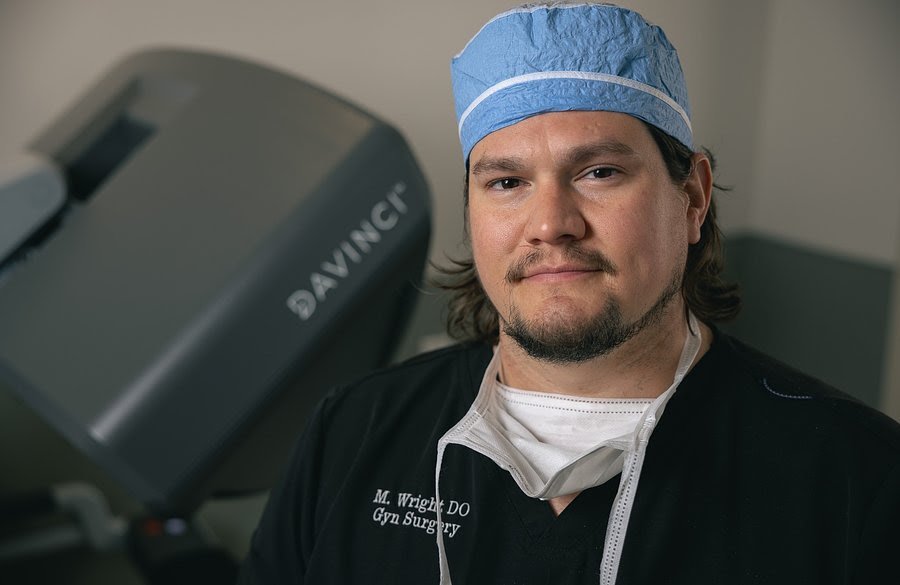
- Details
- By Native News Online Staff
Medical history at a tribal health care facility in the lower 48 United States was made on Monday, October 9, 2023 when the first minimally invasive surgery was performed utilizing the da Vinci XI robotic surgery system.
The da Vinci robotic surgery system allows surgeons to complete minimally invasive operations using specialized robotic instruments equipped to perform the same function as scissors, scalpels and forceps. Surgeons control the robotic arms of the system from a surgical console using instruments attached to their wrists and with the assistance of magnified, 3D views from miniaturized surgical cameras
Medical history at a tribal health care facility in the lower 48 United States was made on Monday, October 9, 2023 when the first minimally invasive surgery was performed utilizing the da Vinci XI robotic surgery system.
The da Vinci robotic surgery system allows surgeons to complete minimally invasive operations using specialized robotic instruments equipped to perform the same function as scissors, scalpels and forceps. Surgeons control the robotic arms of the system from a surgical console using instruments attached to their wrists and with the assistance of magnified, 3D views from miniaturized surgical cameras.
“The investment in this surgical system is going to transform surgical care for the Muscogee Nation Department of Health,” Shawn Terry, Muscogee Nation Secretary of Health said. “We are excited about the enhancement it offers to our surgeons and the benefits it provides to our patients. We are constantly looking for ways to provide the very best in patient care – this robot is just one step towards creating a center for excellence in surgical care.”
Dr. Micah Wright, D.O., a urogynecologist on the medical staff at Council Oak Comprehensive Healthcare, was the first surgeon to perform a procedure using Council Oak’s new da Vinci technology.
“This robot will be a valuable resource for the Muscogee Nation Department of Health,” said Dr. Wright. “The use of the robot extends the surgeon’s vision and movement capabilities, leading to an overall more precise surgery. The major bonus, though, is it is minimally invasive. Not only are there less complications, but the recovery process is, in most cases, so much easier for the patient.”
Robotic surgery has revolutionized the way surgeons perform a number of procedures in recent decades. In addition to enhancing the views, precision and range of motion for surgeons, robotic-assisted surgery decreases the incidence of surgical complications for patients compared to traditional open surgery. Smaller incisions mean less risk for infection, blood loss, pain and scarring. All of these benefits add up to shorter hospital stays and quicker recovery.
For its Council Oak debut, Dr. Wright used the robotic surgical system to perform a hysterectomy. More than 500,000 women in the U.S. have hysterectomies each year, according to the U.S. Department of Health and Human Services’ Office of Women’s Health.
Traditional open hysterectomies where physicians make a large incision in the abdomen typically require a two to three-day hospital stay and six to eight weeks for a full recovery. Robotic-assisted surgery, however, may reduce total recovery time from a hysterectomy by as much as half.
More Stories Like This
Cherokee Nation Proposes $30 Million OU Nursing School Partnership to Expand Health WorkforceHealth Stories We’ll Be Following in 2026
Indian Country Faces Crippling Premiums Under Expired Affordable Care Act Credits
Artificial Intelligence Impacts the Art and Science of Dentistry – AI Part 2
Feds Announce $50 Billion to States for Rural Health, Tribes Barely Mentioned in Awards


